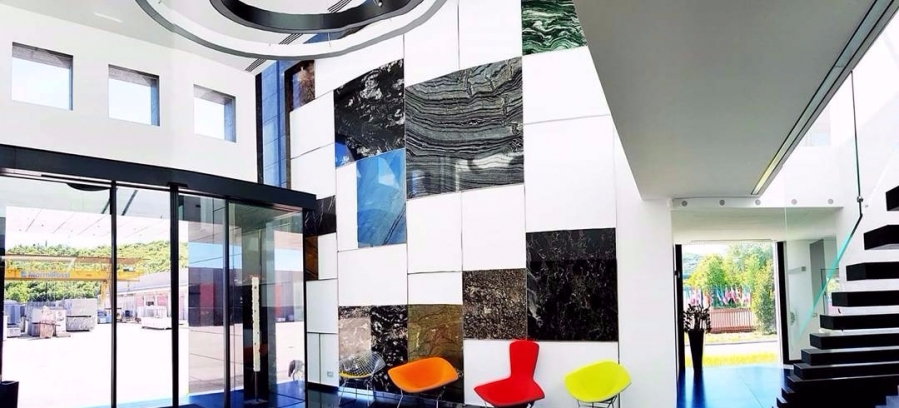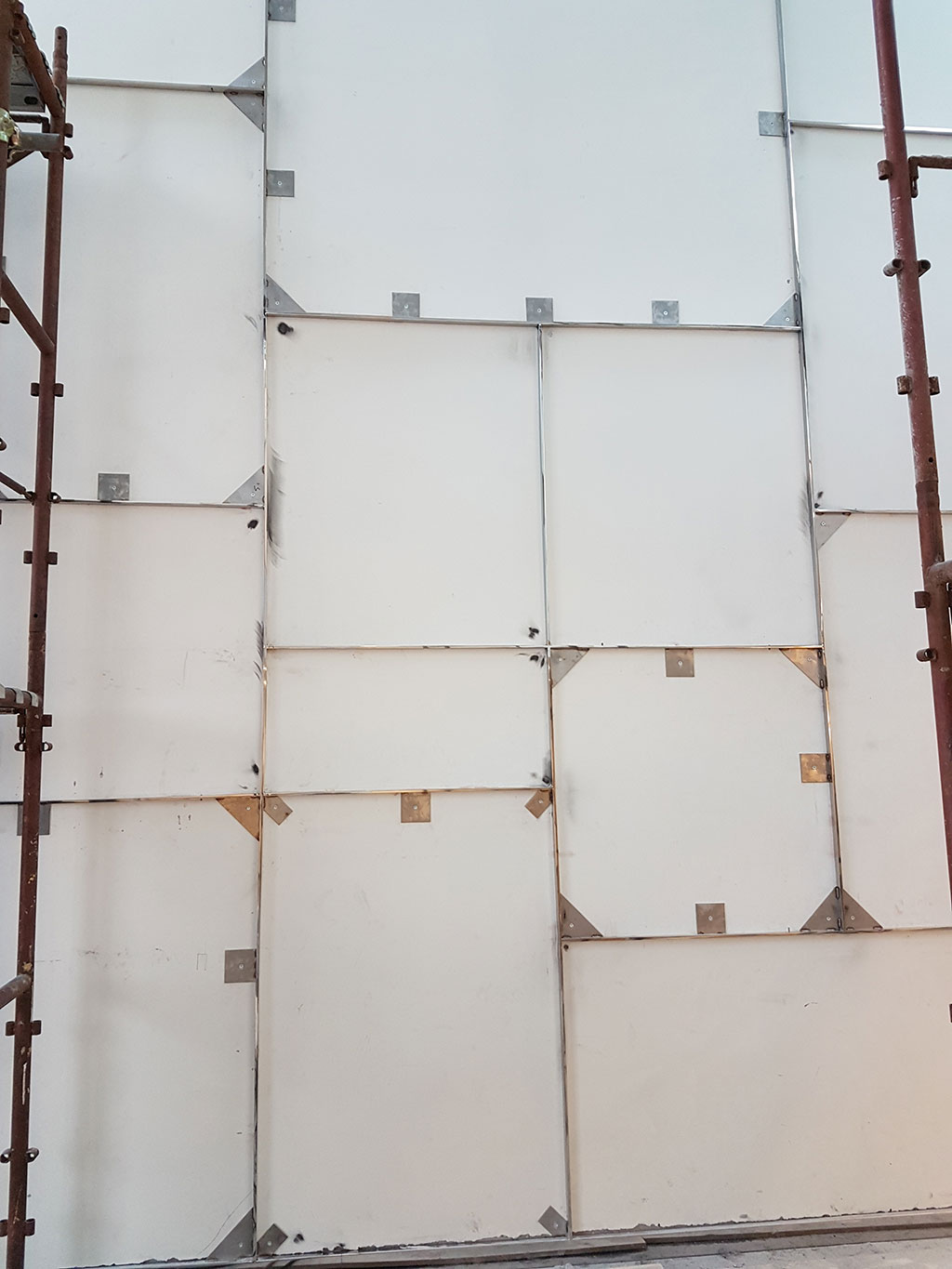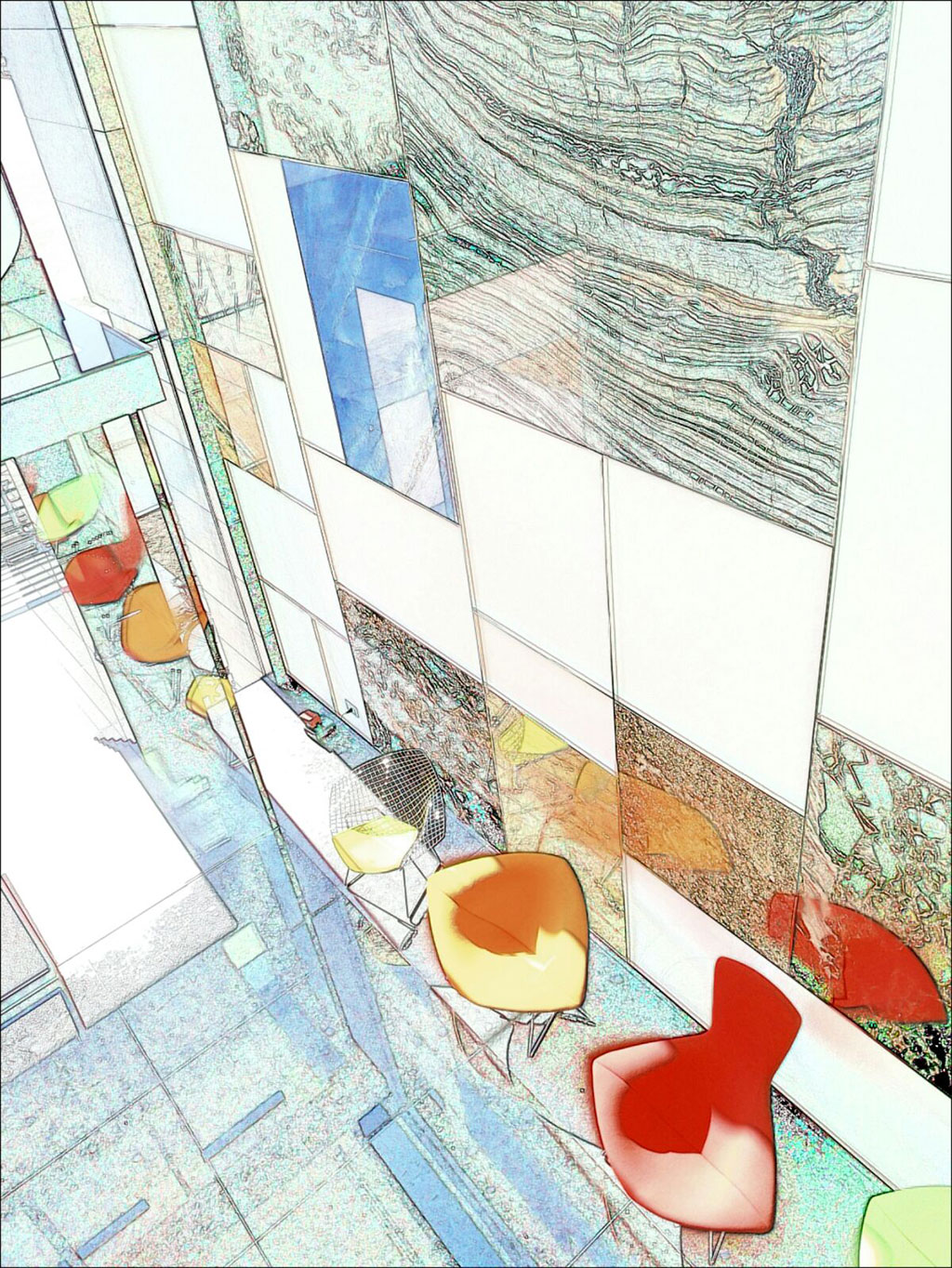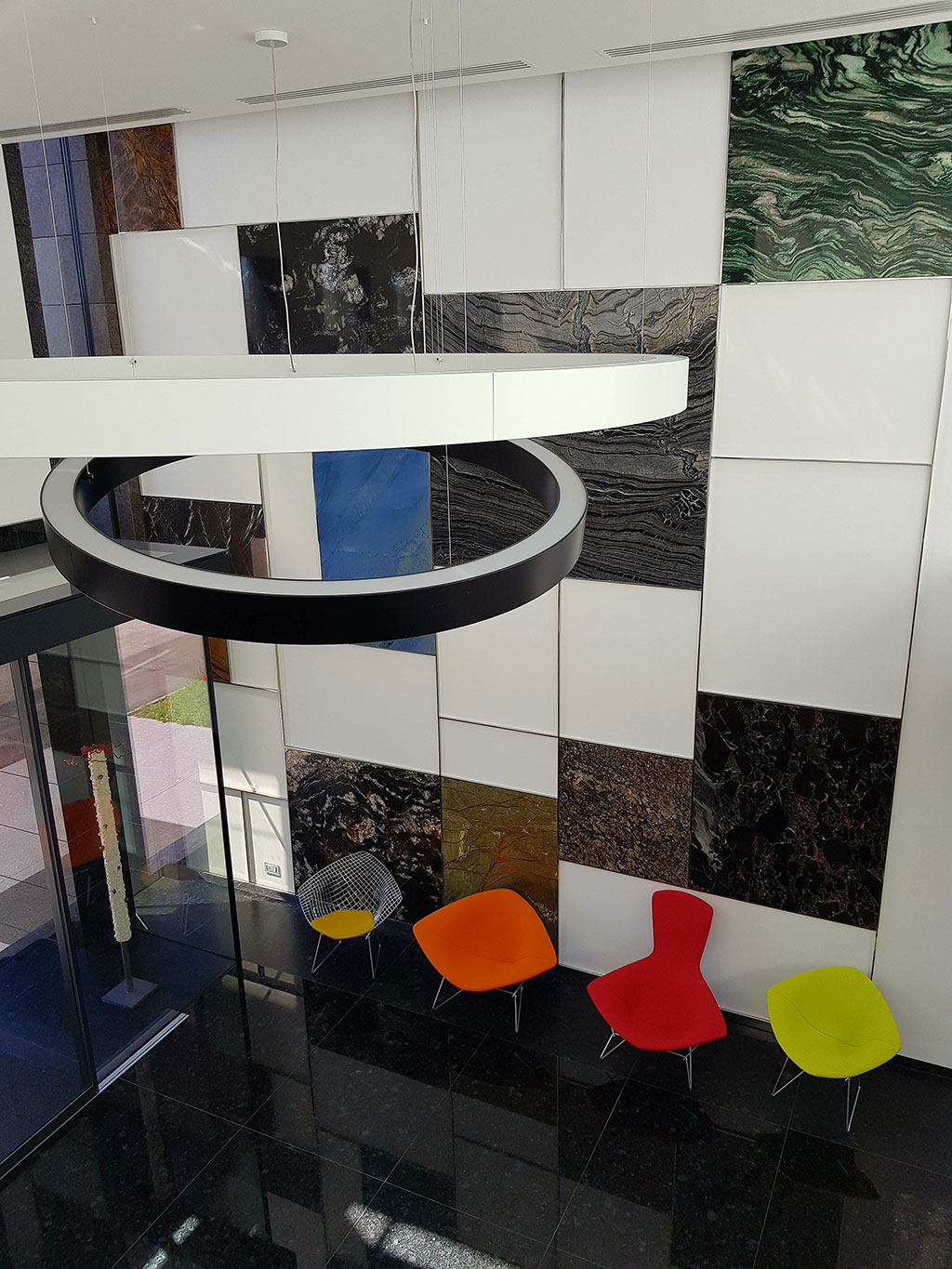A homage to the great artist picturing the concrete abstraction of marble and granite
"Vertical and horizontal lines are the expression of two opposing forces; they exist everywhere and dominate everything; their reciprocal action constitutes 'life'. I recognized that the equilibrium of any particular aspect of nature rests on the equivalence of its opposites. […]
Reality manifests itself as constant and objective – independent of us, but as changeable in space and time. The new plastic idea will ignore the particulars of appearance, that is to say, natural form and colour. On the contrary it should find its expression in the abstraction of form and colour, that is to say, in the straight line and the clearly defined primary colour.“
P. Mondrian

Thanks to the vision and art work of the Dutch artist Piet Mondrian, one of the most important representatives of abstract art, we’ve got the perfect inspiration for the wall in our office hall. So we created our „Mondrian wall“ with simple lines and marble and granite slabs to welcome our visitors.
Big rectangles of different seizes, mainy painted in the three primary colours (yellow, red and blue) and in black and white, characterize most of Mondrian’s famous paintings. One could unfairly label those paintings as trite, though actually, they are the result of an art period that lasted for almost three decades, including years of technical experimenting and inner maturation. Mondrian’s aim was to avoid any reference to concreteness and to simplify the elements of his paintings in order to represent pure reality and the universal. Only through abstraction he could achieve his goal.
Piet Mondrian was born in 1872 in the Netherlands. His early art work is characterized by spiritual and religious anxieties and strongly influenced by Van Gogh, who reflected his emotional distress in his painting style. Mondrian’s compositions of trees show us the gradual waiver of natural forms while passing to a more and more abstract point of view. In his first works you clearly see branches and leaves, whereas later on, the paintings are stripped to the essentials and you can only recognize the bald tree trunk. In his last tree painting only the title gives you the information about the painted object, which is represented by abstractly and differently arranged lines and figures.
In 1917, Mondrian founded with his friend Theo van Doesburg the magazine De Stijl, where many abstract artists of that period collaborated. The artists researched for a new and absolute form that would not change over time and be universally valid for everyone, just as the Italian songwriter Battiato said in his song: “a centre of permanent gravity”.
Form becomes substance, that means that an object is represented in an abstract way and not realistically. There is no difference between foreground and background, black lines are arranged at right angles, forming squares and rectangles, painted mostly in red, blue and yellow, which radiate balance and harmony. After his anxious early years, the artist had finally made his peace.
This art form is so important to him that he abandons the art group after a dispute with his friend, because the latter wants to introduce the diagonal into the paintings: simply unacceptable!
In his paintings, Mondrian attempts to combine the opposing forces of existence while linking vertical and horizontal lines, he tries to find a balance and to restore an absolute order.
If permitted, we’d like to make a comparison: while planning the new office building, we’ve been in search of balance, too. Order and harmony exist where horizontal and vertical lines come together. To be honest, we didn’t refer to the great artist on purpose, but he undoubtedly ‘inspired’ us. For this reason, the ‘Mondrian wall’ was dedicated to him.
As with the art works of Mondrian, our wall resulted after a long period of planning and by means of technology: we carefully planned the harmonious disposition of the material on our ‘canvas’, which would have definitely aroused the envy of the Dutch artist. Technological tools enabled us to install a light steel frame on the wall where the heavy slabs of natural stone could be safely fixed.
In the past, the selection of forms represented the artist’s search of the essential, while we had also to decide the correct height and the right sequence of the slabs’ location. The horizontal and vertical lines, which bothered the Dutch artist so much, inspired us to fix steel bars on the wall that could hold the weight of the slabs and at the same time, would define the large west wall of our office hall.
Our planner, the architect Silvia Bettini, was obsessed by the horizontal and vertical lines of this project, just as Mondrian was back then. The lines of the steel frame on the wall, which she had designed, are a continuation of the horizontal gaps on the wall façade of our office building. The vertical lines instead are dictated by the ceilings. Her particular love of detail is also visible in the gaps on the floor tiles and skirting boards in our office building.
Another issue was the selection of material. We couldn’t allow ourselves to think abstractly, but we needed to plan in concrete terms. As we’ve been working with marble and granite for a long time, we know for sure that the colouring of natural stone is rarely defined and not always brilliant. The chaotic creativity of nature adds colour to colour, that’s why the colour shades are not clearly defined and the lines, forms and colours of natural stone overlap.
Although there are many types of marble, granite and other natural stones in our warehouse, we first limited the selection to the colour and, in the second place, to the grain size, the vein pattern and the texture. Our object was to create a harmonious final product.
[widgetkit id="8"]
In the wall centre, the colour blue sticks almost boldly, it is the magnificent Brazilian quartzite Azul Imperial. On the left of the top, nearly hidden, we see a rectangle of Rain Forest Brown with a brick coloured texture that draws paths on the spotted grey blue and ochre background.
On the other side, on the right of the top, hangs a Verde Lapponia slab with green dots, that reminds us of the colours of the Tundra, whereas the snow white shades suggest thaw in spring. Beneath the blue rectangle, we find a Fusion Black slab, another Brazilian material, with creatively mixed ivory and russet splashes and waves on a black background. On the right side, we can see the green and map-styled surface of a Rain Forest Green slab, which is interrupted now and then by ochre veins.
More to the right, you will admire the cascade of golden shells on a black beach while looking at the dense and pebble-shaped texture of the Indian granite slab called Pegasus.
An elegant and challenging material for interior design is the marble Montmartre. Its dark black and translucent background shows dense and low-lying golden veins, that overlap and look like drawn by an excellent illustrator.
When you look at the golden colour shades and the almost grey blue veins of the Prada Gold slab, you may imagine a beautiful sunset oceanfront.
Above Prada Gold hangs the rectangle made of Pietra Grey, a compact and fine grained marble with a uniform background. The grey spotted colour of the slab’s surface ranges from anthracite to dove grey and shows fine but clearly visible white veins. This marble is used indoor as well as outdoor, thanks to its medium-hard surface and excellent weather resistance.
Another Brazilian granite slab is positioned half way up on the wall, it is called Titanium. Large and elegant looking ivory-coloured clouds of smoke seem to drift up from the black background.
However, the eye-catching centrepiece of the wall is the large Chinese marble slab called Silver Wave. Grey and ivory-coloured waves wind themselves through the dark background, so as to create a very artful overall picture.
Our Mondrian wall is not only effective, but also a tasteful way to show a small part of our marble and granite collection from our warehouse.



